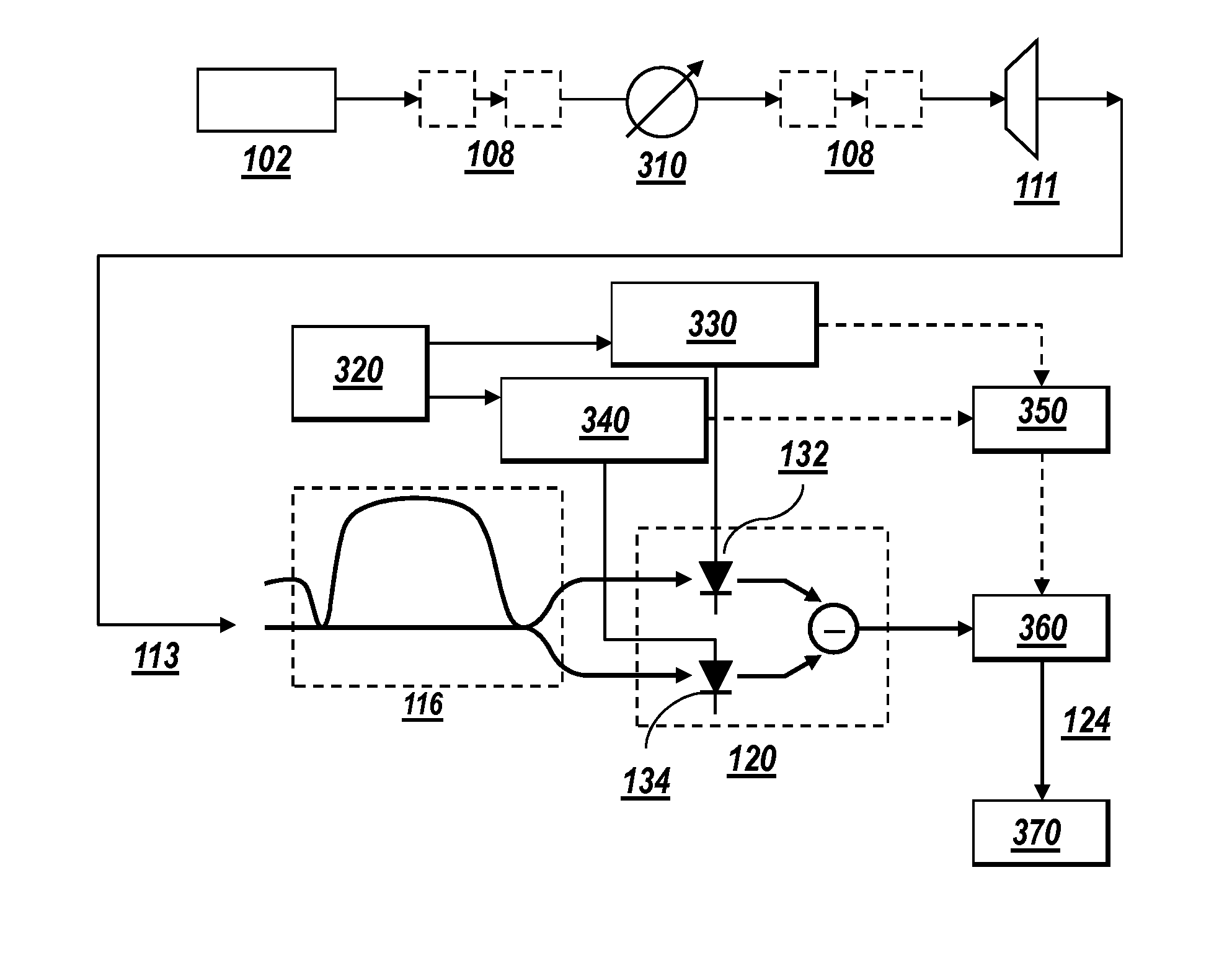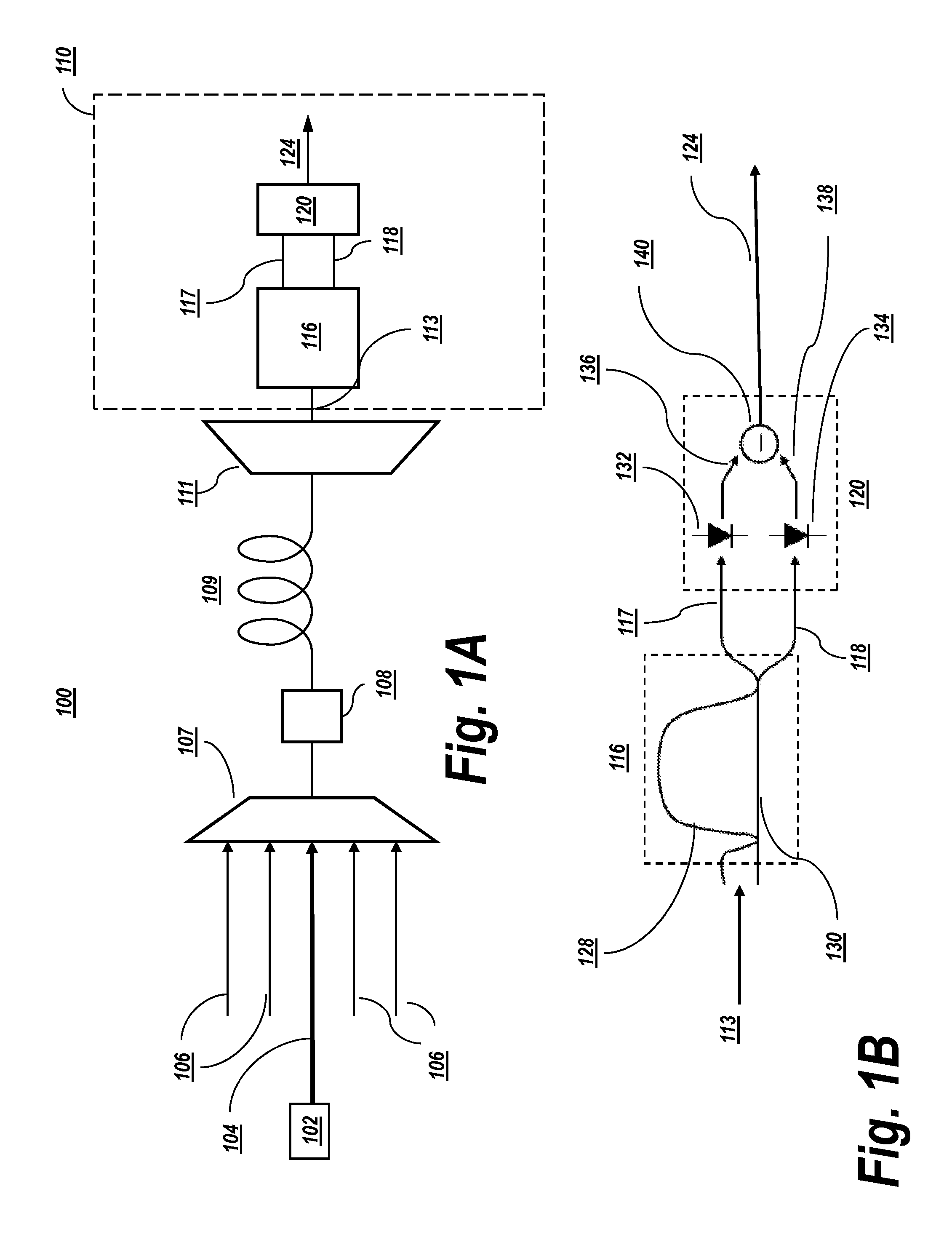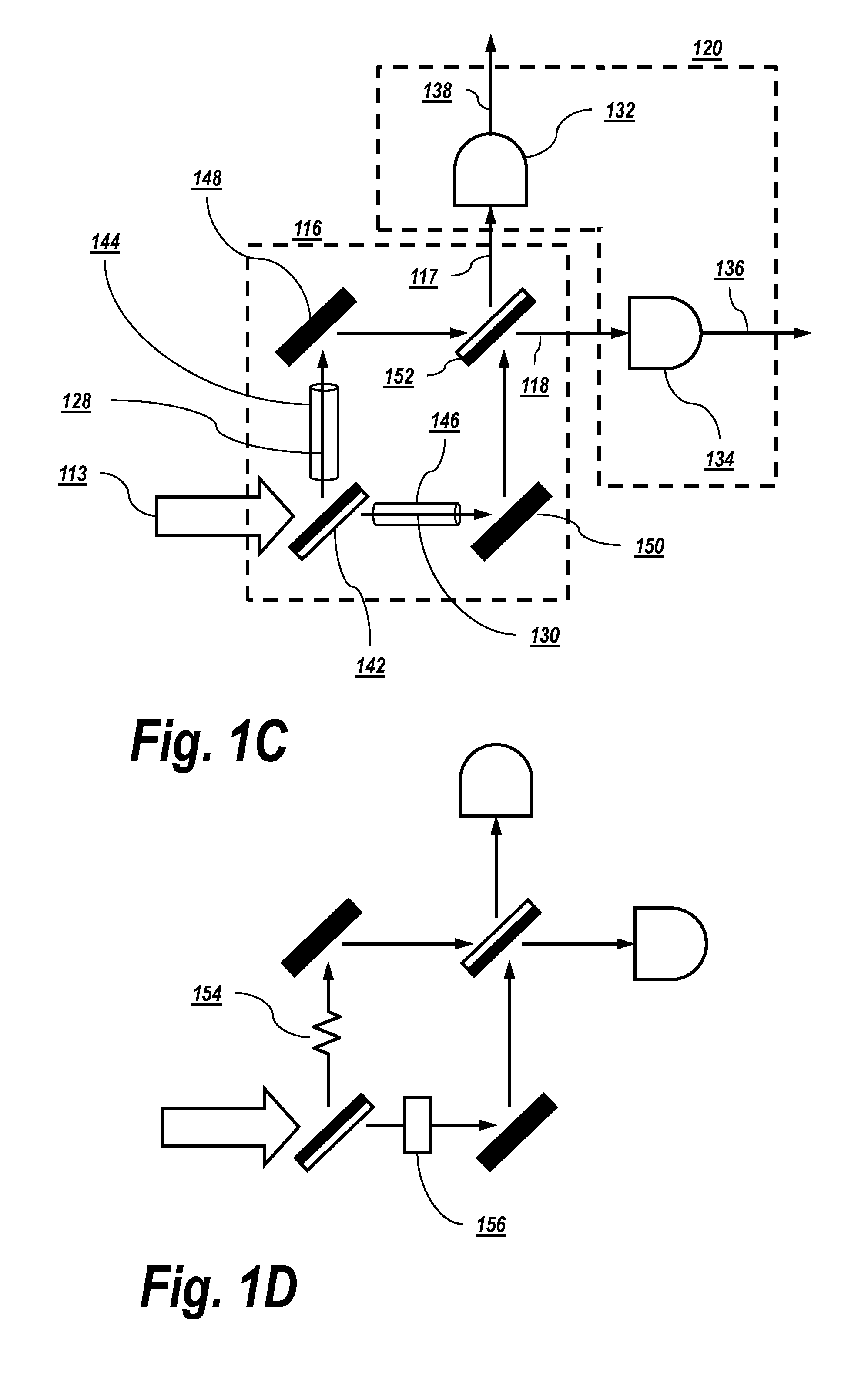Self-adaptive receivers not requiring FEC feedback
a receiver and self-adaptive technology, applied in the field of optical communication, can solve the problems of dbpsk transmission system with 1.5-2 db worse receiver sensitivity than dbpsk transmission system, transmitter and receiver are significantly more complex than a traditional dbpsk transmitter, and the observed characteristic may be maximized or minimized, the effect of improving performan
- Summary
- Abstract
- Description
- Claims
- Application Information
AI Technical Summary
Benefits of technology
Problems solved by technology
Method used
Image
Examples
Embodiment Construction
[0076]Optical communication networks rely on optical receivers to demodulate optical signals and convert the demodulated optical signal into an electrical signal. Optical receivers may be associated with one or more characteristics which can be made to vary during a transmission of an optical signal in order to improve the quality of the received signal. To achieve the optimum performance (i.e., minimum BER), the parameters of the receiver data recovery (for example, the DT voltage and the decision phase / timing) should be properly set. Another important receiver parameter that may be optimized, depending on the transmission line conditions, is the electrical bandwidth (BW) of the receiver.
[0077]The present invention estimates an amount of optical filtering (and hence, an optical bandwidth of an optical signal) in an optical communication network. The amount of the optical filtering may be representative of, for example, a narrowing or a widening of an optical bandwidth by one or mor...
PUM
 Login to View More
Login to View More Abstract
Description
Claims
Application Information
 Login to View More
Login to View More - R&D
- Intellectual Property
- Life Sciences
- Materials
- Tech Scout
- Unparalleled Data Quality
- Higher Quality Content
- 60% Fewer Hallucinations
Browse by: Latest US Patents, China's latest patents, Technical Efficacy Thesaurus, Application Domain, Technology Topic, Popular Technical Reports.
© 2025 PatSnap. All rights reserved.Legal|Privacy policy|Modern Slavery Act Transparency Statement|Sitemap|About US| Contact US: help@patsnap.com



